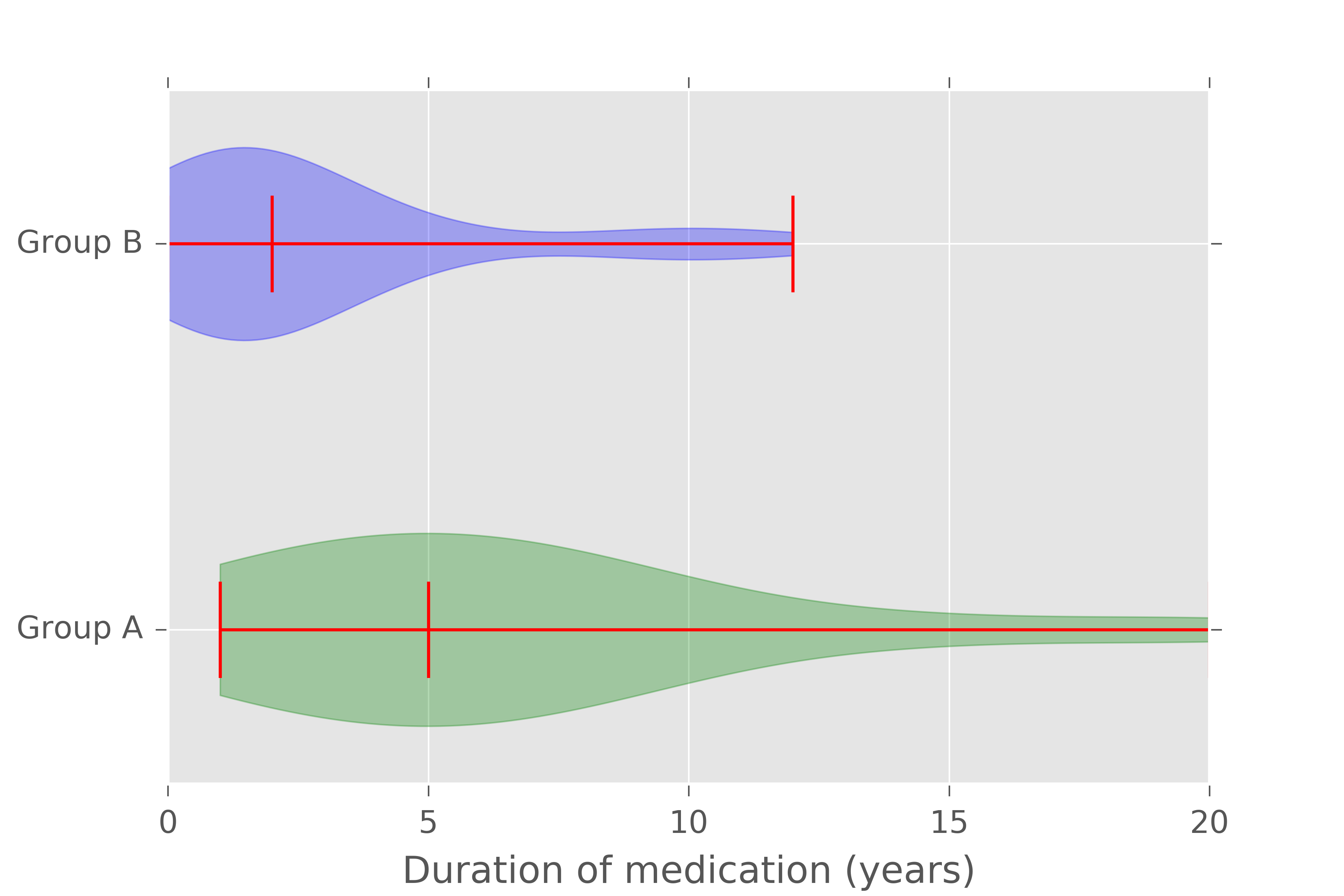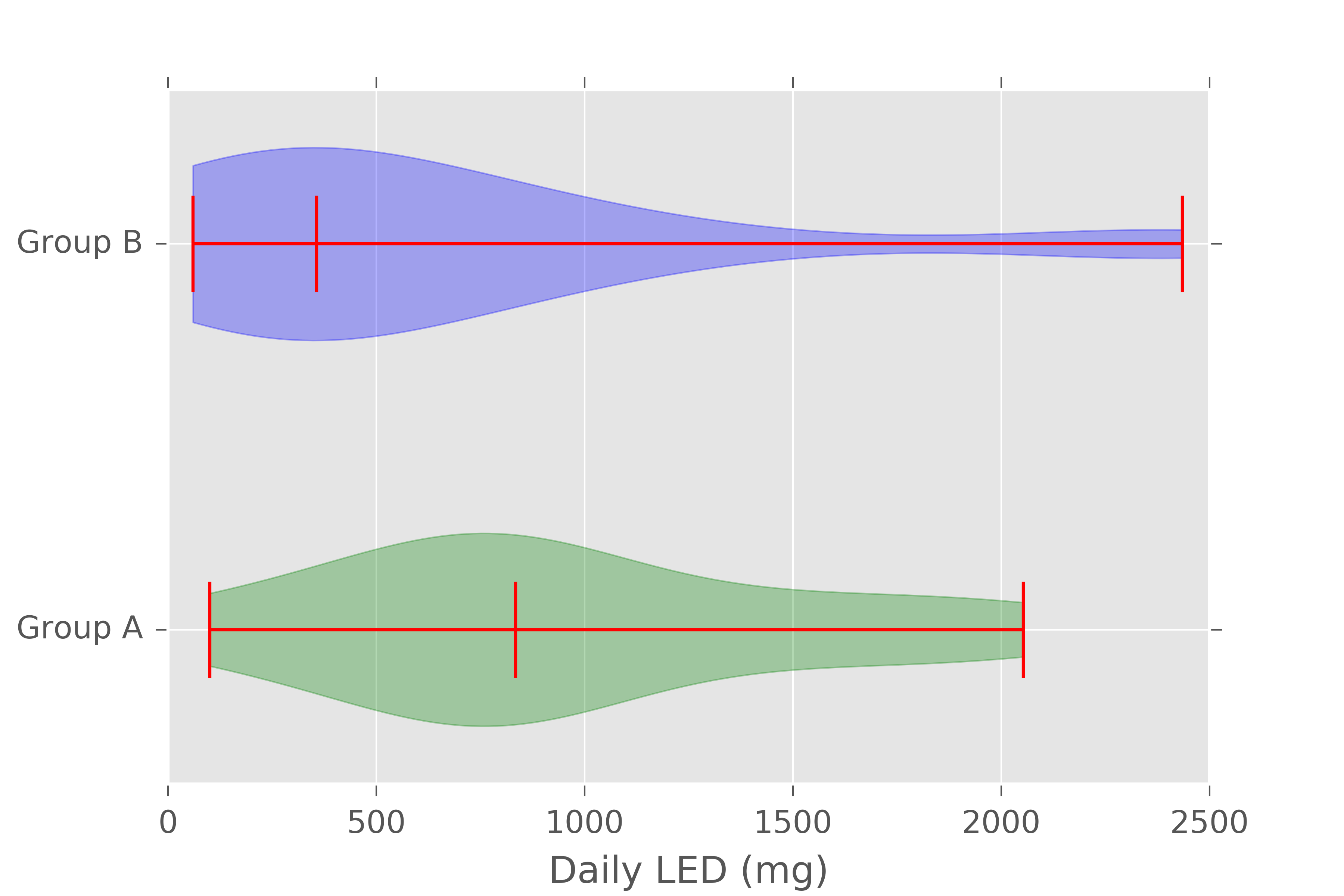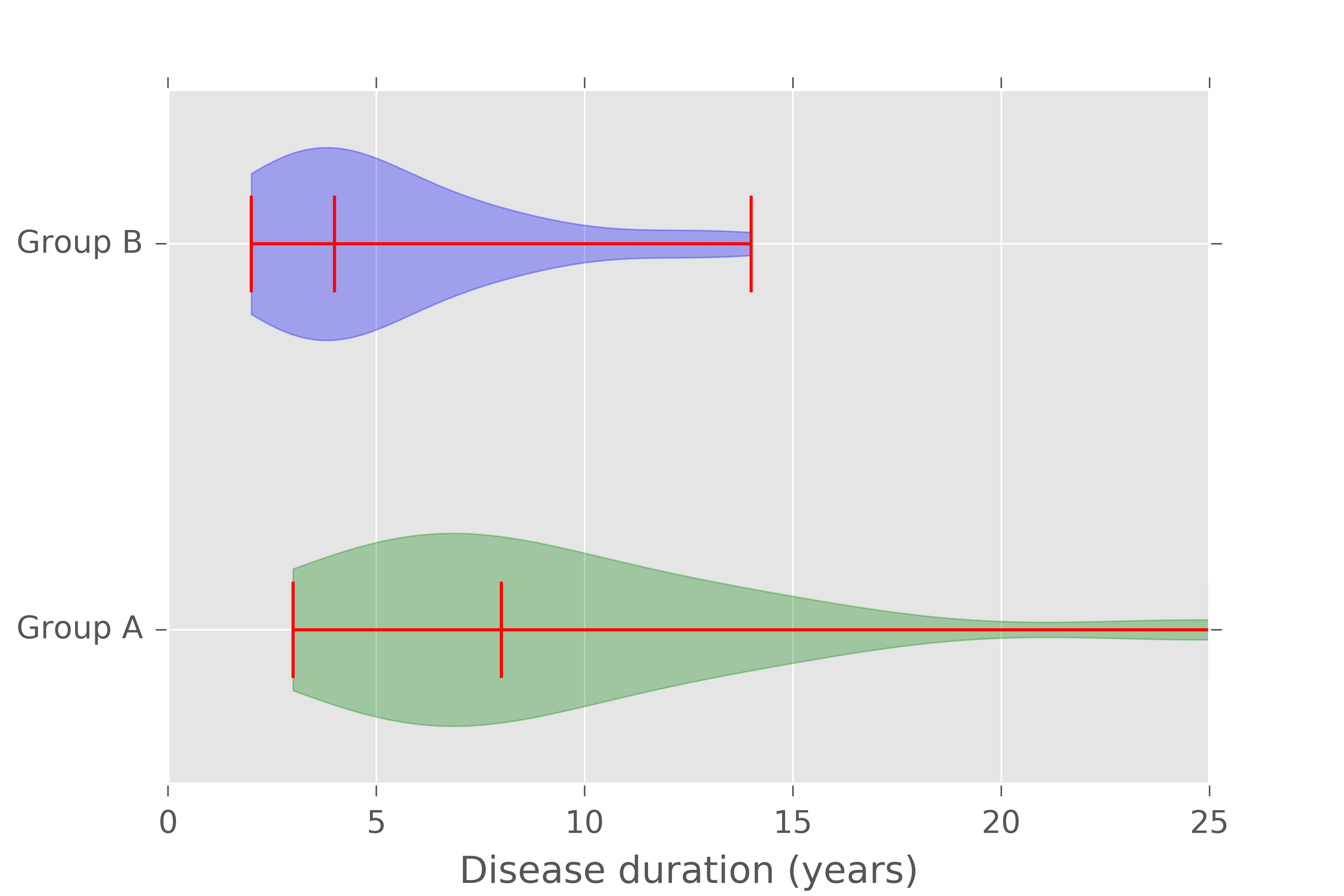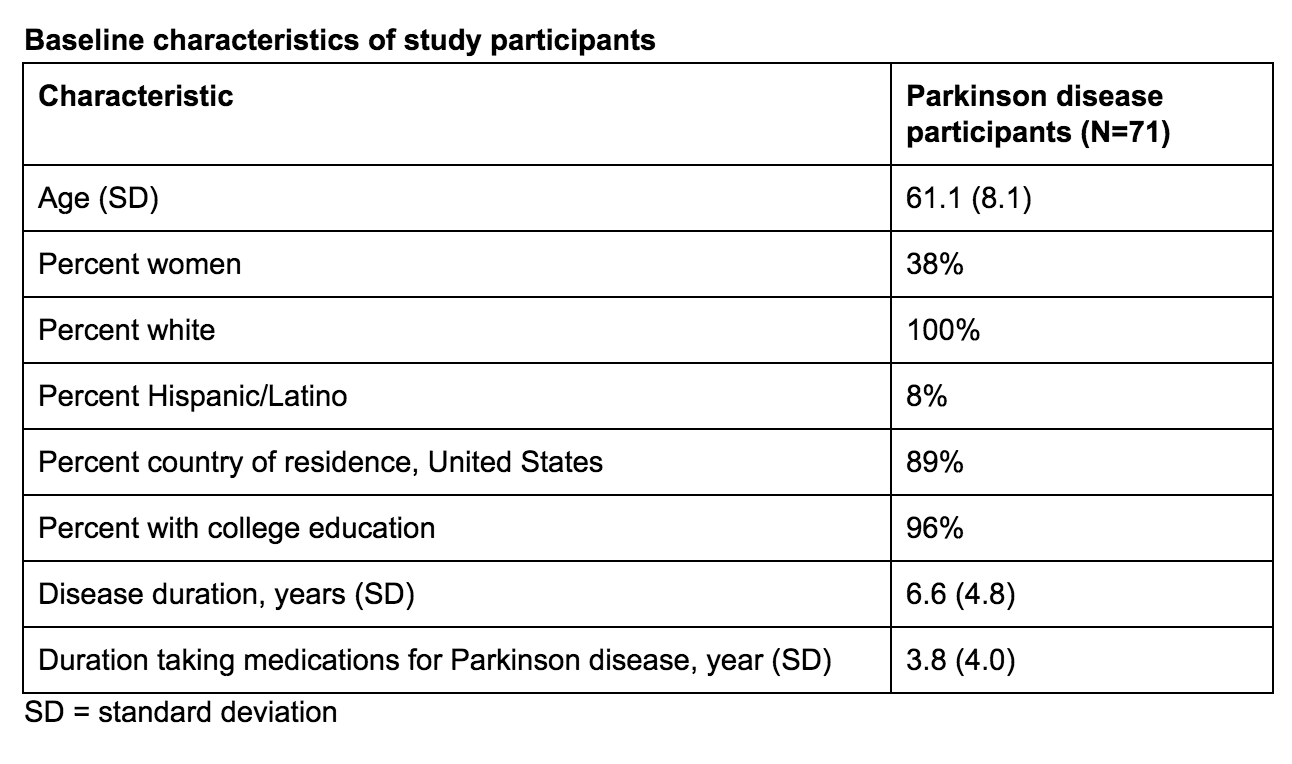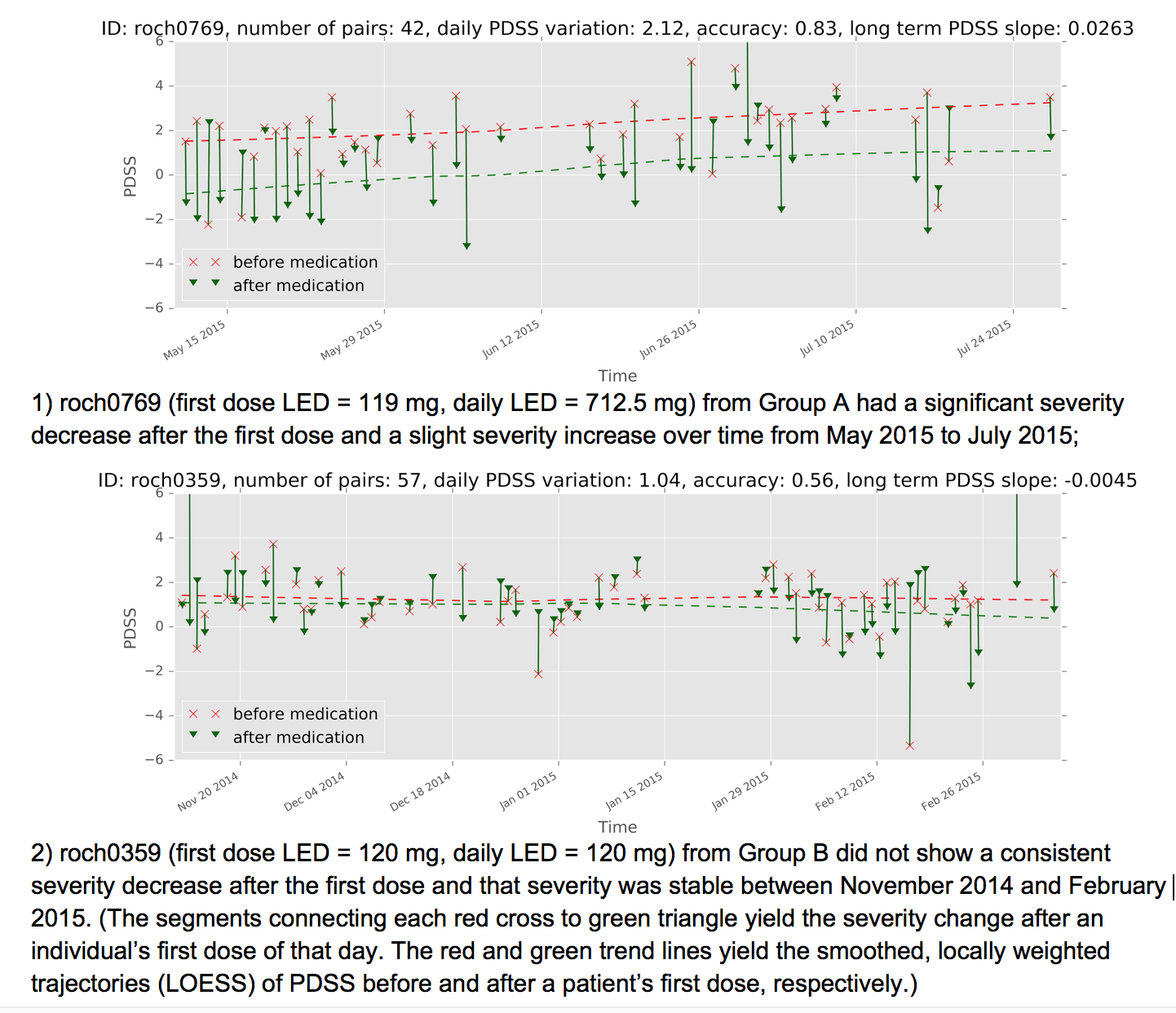Session Information
Date: Tuesday, June 6, 2017
Session Title: Technology
Session Time: 1:45pm-3:15pm
Location: Exhibit Hall C
Objective: To propose a novel mobile-based Parkinson Disease Severity Score (PDSS) to provide high resolution and objective severity monitoring for patients in the home setting.
Background: Currently, the principal means of assessing disease severity is assessed through subjective, episodic rating scales performed primarily in the clinic. New tools are needed to enable objective, high-frequency assessments outside the clinic.
Methods: Using the HopkinsPD app [2], 71 patients with PD who were on medication (Table 1) completed 5,800 self-administered active tests in pairs — right before and within one hour after their first dose. The active tests are designed to measure aspects of motor function such as gait, voice, dexterity, and reaction time. A novel machine learning algorithm for disease severity score learning [1] was used to train a model that maps a vector of measurements (490 features in aggregate across all tests [2]) to a scalar severity score, the PDSS. The learning algorithm relies on the assumption that the severity ordering before and after medication is correct in the majority of training examples provided. 10-fold cross validation is used to evaluate model performance. Model accuracy is defined as the ratio of active tests in which PDSS decreases after the first dose.
Results: The average accuracy over all participants was 67%. Mainly, over 20% of individuals (Group A) show a significant severity decrease after medication (with significant defined as accuracy > 80%). Nearly 30% of individuals (Group B) did not show a significant or consistent severity decrease after medication (defined as accuracy < 60%). Figures 1 ~ 3 compare the two groups on disease duration, duration of medication, and daily dosage respectively. They suggest that patients who have a longer PD history and medication period are more likely to experience significant decreases in disease severity after medication. A detailed example of short-term and long-term severity trajectories is provided in Figure 4.
[table1]
[figure1]
[figure2]
[figure3]
[figure4]
Conclusions: The Parkinson Disease Severity Score provides a new way to monitor both daily severity variation and long-term progression with high granularity.
Our preliminary results indicate that PDSS may be detecting changes in individuals with PD who are more likely to be fluctuators (have had longer disease and medication histories).
References: [1] D. Kirill, and S. Saria. “Learning (predictive) risk scores in the presence of censoring due to interventions.” Machine Learning 102.3 (2016): 323-348.
[2] A. Zhan, MA Little, DA Harris, SO Abiola, E Dorsey, S. Saria, and A. Terzis, “High Frequency Remote Monitoring of Parkinson’s Disease via Smartphone: Platform Overview and Medication Response Detection”, arXiv preprint arXiv:1601.00960, 2016.
To cite this abstract in AMA style:
A. Zhan, S. Mohan, M. Elson, E. Dorsey, A. Terzis, S. Saria. PDSS: A Novel Mobile-based Parkinson Disease Severity Score [abstract]. Mov Disord. 2017; 32 (suppl 2). https://www.mdsabstracts.org/abstract/pdss-a-novel-mobile-based-parkinson-disease-severity-score/. Accessed April 16, 2025.« Back to 2017 International Congress
MDS Abstracts - https://www.mdsabstracts.org/abstract/pdss-a-novel-mobile-based-parkinson-disease-severity-score/

